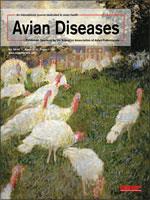Ring-necked pheasants raised on propagation farms can be severely parasitized with Syngamus trachea (gapeworm) and other parasitic worms. Fenbendazole is a highly effective benzimidazole-class anthelmintic that is not currently approved for game bird species in the United States. The objective of this work was to provide target animal safety data to support a label claim for fenbendazole in pheasants at 100 parts per million (ppm) in the feed for 7 consecutive days. Demonstration of safety in young pheasants and a separate demonstration of reproductive safety in adult birds were required. In the young bird study, 160 Chinese ring-necked pheasants (Phasianus colchicus, 80 males and 80 females) were fed a commercial game bird starter ration containing no antibiotics, growth promoters, or coccidiostats until day 0 of the study (approximately 21 days of age). On day 0 the birds were placed on their respective study diets containing fenbendazole at 0, 100, 300, and 500 ppm for 21 days (three times the normal treatment duration). Clinical observations were recorded twice daily. Feed consumption, feed conversion rate, and body weights were determined for each pen. Three birds from each pen were randomly selected for necropsy, histopathology, and clinical pathology. Birds were carefully examined for feathering abnormalities immediately following euthanasia. The remaining birds in each pen were submitted for drug concentration analysis so that concentrations (for low vs. high treatment levels) could be correlated with clinical observations, clinical pathology, and histologic findings. There no morbidities or mortalities after study day −1. There were no statistically significant treatment-related differences in feed consumption, feed conversion rates, body weights, serum biochemistry profiles, hematologic profiles, gross necropsy findings, histopathologic examination, and feathering. Allowable liver and muscle concentrations of fenbendazole sulfone in turkeys are 6 and 2 ppm, respectively, with a 6-hr feed withdrawal. Analysis of fenbendazole concentrations in kidney, liver, leg/thigh, and breast muscle and skin with associated fat revealed that, even at the highest dose level used and with no feed withdrawal, fenbendazole concentrations were relatively low in these tissues. These findings indicate that fenbendazole has a relatively wide margin of safety in young pheasants and that the proposed dose of 100 ppm in the feed for 7 consecutive days is well within the margin of safety. In the reproductive safety study, two large game bird farms fed fendbendazole at 100 ppm for 7 days and collected data on hatching percentage of pheasant eggs before and after treatment. Reproductive performance in hen pheasants was not adversely affected.
Seguridad de Fenbendazol en faisanes comunes (Phasianus colchinus).
Los faisanes comunes criados en granjas pueden ser severamente parasitados con Syngamus trachea (con sinonimia en inglés gapeworm) y otros helmintos parásitos. El fenbendazol es un antihelmíntico de la clase de los bencimidazoles, muy efectivo que no está aprobado actualmente para las especies de aves de caza en los Estados Unidos. El objetivo de este trabajo fue proporcionar datos sobre la seguridad en estas aves para apoyar una solicitud de autorización del uso de fenbendazol en faisanes con una dosis de 100 ppm en el alimento durante siete días consecutivos. Se requiere de la demostración de la seguridad en faisanes jóvenes y una demostración independiente de seguridad en la reproducción de las aves adultas. En el estudio de aves jóvenes, 160 faisanes comunes (Phasianus colchicus, 80 machos y 80 hembras) fueron alimentados con una ración de iniciación para aves de caza comercial que no contenía antibióticos, promotores del crecimiento, o coccidiostatos hasta el día cero del estudio (aproximadamente a los 21 días de edad). En el día cer





